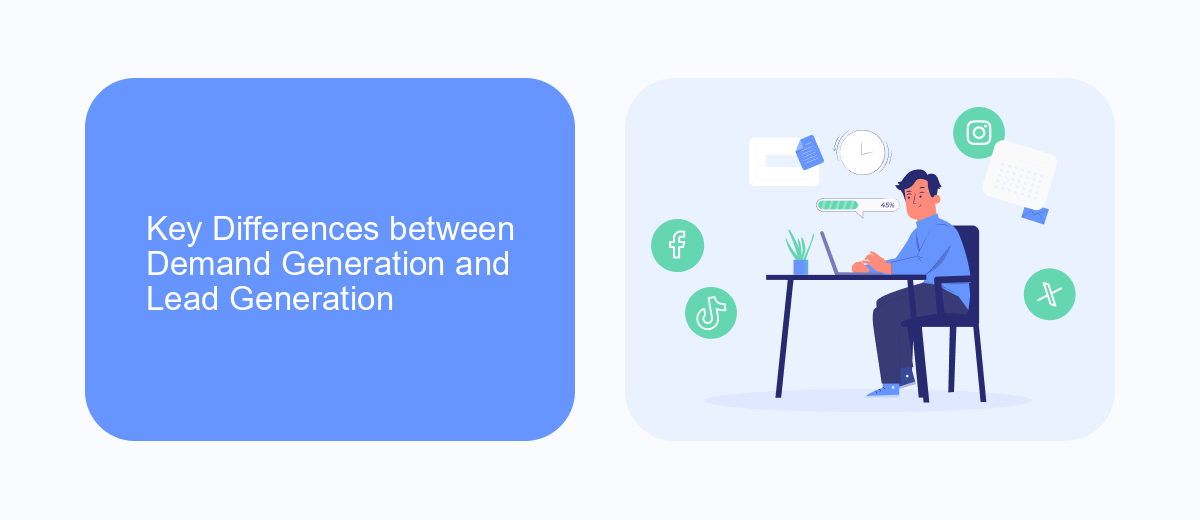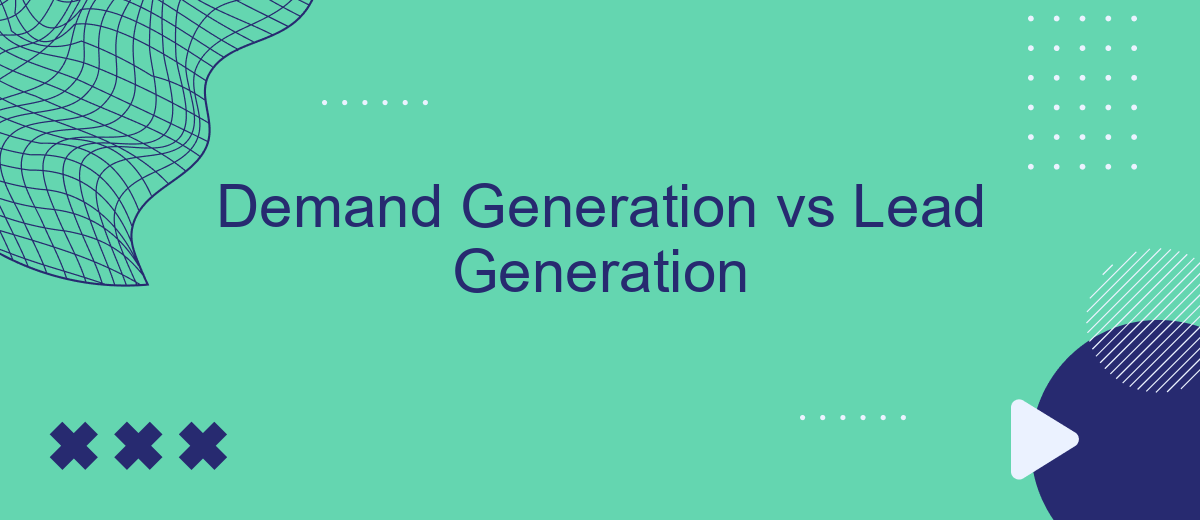In the dynamic world of marketing, understanding the distinction between demand generation and lead generation is crucial for crafting effective strategies. While both aim to drive business growth, they operate on different principles and target various stages of the customer journey. This article delves into the key differences, benefits, and best practices of demand generation versus lead generation.
Definition of Demand Generation and Lead Generation
Demand Generation and Lead Generation are two crucial strategies in the realm of marketing, each with distinct goals and methods. Demand Generation focuses on creating awareness and interest in a company's products or services, targeting a broad audience to build brand recognition and stimulate demand.
- Demand Generation: Aims to educate and inform potential customers about the brand.
- Lead Generation: Focuses on capturing contact information from interested prospects to convert them into sales opportunities.
While both strategies are essential for a comprehensive marketing approach, they serve different purposes. Demand Generation lays the groundwork by attracting potential customers, while Lead Generation captures and nurtures these prospects into actionable leads. Tools like SaveMyLeads can facilitate the integration between various marketing platforms, ensuring a seamless transition from generating demand to capturing leads efficiently.
Key Differences between Demand Generation and Lead Generation

Demand Generation focuses on creating awareness and interest in a company's products or services. It aims to educate potential customers, build brand recognition, and nurture long-term relationships. Tactics include content marketing, social media engagement, webinars, and SEO. The goal is to drive high-quality traffic to the website and engage visitors at various stages of the buyer's journey, ultimately fostering a strong brand presence and trust.
Lead Generation, on the other hand, is more targeted and aims to capture contact information from potential customers who have shown interest in the company's offerings. This process often involves the use of forms, gated content, and calls-to-action. Tools like SaveMyLeads can be instrumental in streamlining this process by automating data collection and integration with CRM systems, ensuring that leads are efficiently captured and managed. The primary objective is to convert these leads into sales opportunities and drive revenue growth.
Benefits of Demand Generation

Demand generation focuses on creating awareness and interest in your products or services, which can lead to long-term benefits for your business. By effectively implementing demand generation strategies, companies can build a strong brand presence and establish trust with potential customers.
- Increased Brand Awareness: Demand generation helps to increase visibility and recognition of your brand, making it easier for potential customers to find and remember you.
- Improved Customer Engagement: By providing valuable content and resources, you can engage with your audience and foster deeper relationships.
- Higher Conversion Rates: When customers are more informed and interested in your offerings, they are more likely to convert into paying customers.
- Better Quality Leads: Demand generation attracts individuals who are genuinely interested in your products or services, resulting in higher quality leads.
- Streamlined Integration: Utilizing services like SaveMyLeads can automate and optimize the process of integrating various marketing tools, enhancing the efficiency of your demand generation efforts.
Incorporating demand generation into your marketing strategy can lead to sustained growth and a more robust sales pipeline. By focusing on creating demand, businesses can nurture potential customers and drive long-term success.
Benefits of Lead Generation

Lead generation is a critical component of any successful marketing strategy, as it focuses on identifying and attracting potential customers who have shown interest in your product or service. By capturing leads, businesses can build a pipeline of prospective clients to nurture and convert into loyal customers.
One of the primary benefits of lead generation is its ability to target specific audiences. This targeted approach ensures that marketing efforts are directed towards individuals who are more likely to be interested in the offerings, thereby increasing the chances of conversion. Additionally, lead generation helps in gathering valuable data about potential customers, which can be used to tailor marketing strategies and improve overall campaign effectiveness.
- Increased conversion rates through targeted marketing
- Enhanced customer insights and data collection
- Cost-effective marketing by focusing on interested prospects
- Ability to build long-term customer relationships
Moreover, integrating lead generation with services like SaveMyLeads can streamline the process by automating lead capture and management. SaveMyLeads allows businesses to connect various platforms and tools, ensuring that leads are efficiently tracked and nurtured through the sales funnel. This automation not only saves time but also enhances the accuracy and effectiveness of lead generation efforts.
Choosing the Right Strategy for Your Business
Choosing the right strategy between demand generation and lead generation depends on your business goals and current market position. Demand generation focuses on creating awareness and interest in your products or services, which is essential for new businesses or when launching new products. It involves a broad range of activities such as content marketing, social media engagement, and brand building to attract a wider audience. On the other hand, lead generation is more targeted and aims to convert interested prospects into leads through tactics like email marketing, webinars, and gated content.
For businesses looking to streamline their lead generation efforts, integrating automated tools can be highly beneficial. Services like SaveMyLeads can help by automating the process of capturing and managing leads from various platforms, ensuring that no potential customer falls through the cracks. By setting up integrations through SaveMyLeads, you can focus more on nurturing and converting these leads, rather than spending time on manual data entry and management. Ultimately, the choice between demand and lead generation should align with your business objectives, resources, and the stage of your customer journey.


FAQ
What is the difference between Demand Generation and Lead Generation?
How do Demand Generation and Lead Generation work together?
What metrics are used to measure the success of Demand Generation?
What are some effective tactics for Lead Generation?
How can automation tools help in Demand and Lead Generation?
SaveMyLeads is a simple and effective service that will help you automate routine tasks and optimize business processes. Stop wasting time uploading leads from Facebook manually – you can do it automatically, saving a lot of time and money. Eliminate routine from workflows and achieve more with minimal investment of money, effort and human resources.
